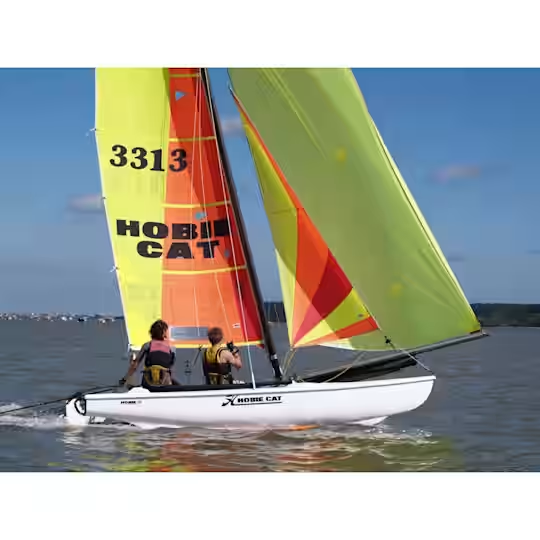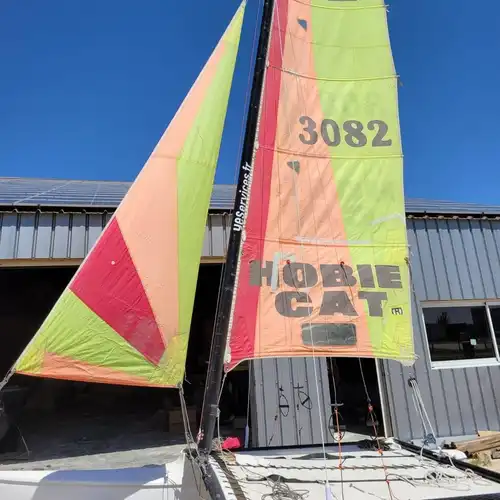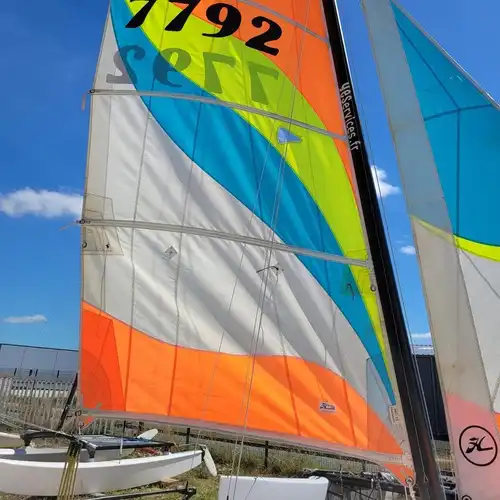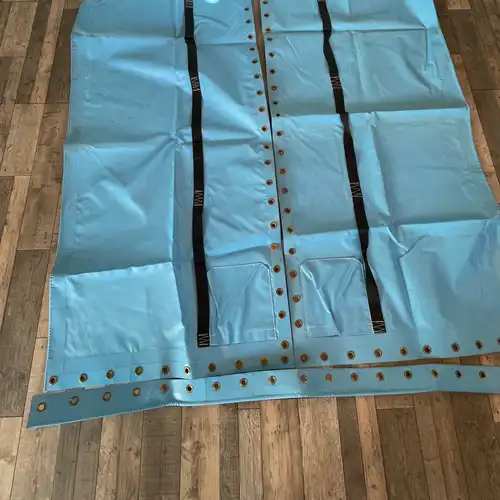Hobie Cat 15 used buy/sell, 5 ads listing and price
- iWannaboat
- Catamarans
- Hobie Cat
- Hobie Cat 15
Hobie Cat 15 short DescriptionThe Hobie Cat 15 is an entry-level catamaran. Slightly heavier and less fast than its famous elder, the Hobie Cat 16, the HC15 is commonly found in sailing schools, and it’s a reassuring boat for discovering two‑hull sailing.

5 ads «Hobie Cat 15»





You want to display this ad module «Hobie Cat 15» on your site, for the class association for example. I have a plugin that allows it, contact me ✉️
Hobie Cat 15 — overview
1) History, launch, designer
The Hobie Cat 15 (HC15) is a “beach cat” designed and built by Hobie Cat Europe in the early 1990s. Shown in late 1992 (including at the Paris Boat Show) and released commercially around 1992–1993, it was intended to bridge the gap between the Twixxy/T1 and the more demanding HC16. The design is attributed to the Hobie Cat Europe team; the “Club” version is the most widespread in sailing schools.
Key design points (recap) Length 4.95 m, beam 2.26 m, weight about 155 kg, mast ~7.20 m. Mainsail ~11.5 m², jib 3.0 to 3.5 m² depending on year/sailmaker; optional spinnaker/gennaker.
2) Use and crew profiles
A quintessential “school/family” catamaran: forgiving platform, high buoyancy, double trapeze, and the ability to carry 2 to 4 people (CE rating typically 3–4 depending on version; sailing centers often use it with 3). Ideal for beginners, sporty day-sailing, and learning maneuvers with control. Audience: teens/adults at sailing schools, families, and owners seeking a robust catamaran—less twitchy than an HC16 yet with more carrying capacity than a 14‑footer. Common in many training fleets.
3) Wear, maintenance, parts to replace
What to watch when buying and for routine care:
Hulls/bottoms: gelcoat chips/repairs, potential leaks at the deck/hull joint; check bottom flatness/stiffness after years of rental use.
Trampoline: stitching and grommets; PVC “club” tramps eventually crack under sun and salt. Plan periodic replacement. (Parts are easy to source from authorized Hobie dealers.)
Rudders and EZ‑Loc/cam system: cam/pin/bushing wear; should lock positively down. Replace cams/springs/pins if there’s play. Replacement kits are available.
Standing rigging: replace shrouds/forestay preventively every 5–8 years (earlier if history unknown) to reduce dismasting risk. Standard Hobie parts are widely available.
Lines/blocks/mainsheet system: “club” lines wear quickly; inspect mainsheet blocks (often 6:1) and the traveler track.
Sails: battens, batten pockets, bolt rope; HC15 batten sets are common spares.
Accessories: mast float, replaceable keel protectors, neoprene anti‑skid rail tapes (consumables, easy to swap).
Parts availability (international): very good via Hobie Authorized Dealers worldwide and established multihull suppliers such as Murray’s (US), CatamaranParts.com (US), Forward Sailing (EU), and local Hobie distributors in your region.
Quick care tips:
Rinse with fresh water after every sail, especially rudders/blocks/traveler.
Dry storage with the mast down when possible; loosen trampoline off‑season.
Annual check: bailer and hatch seals, shrouds/chainplates, cross‑beam fasteners.
4) Used‑market prices and buying advice
Typical ranges seen in 2024–2025 (excluding road trailer; vary by region and condition):
Entry‑level/project boats: about $750–$1,300.
Complete, ready‑to‑sail examples (often 1997–2005): about $1,100–$2,200.
Refurbished/recent or professionally overhauled “club” packages: about $2,200–$5,500, depending on gear and condition.
Fast‑track buying checklist:
Usage history: sailing school/rental vs private use; prefer a well‑maintained boat—even if older—over a “beach sleeper.” Ask for receipts (standing rigging, trampoline, cam kits).
On‑land inspection:
Hulls: impacts, cracks, gelcoat repairs, hatch sealing; compare left/right weight by feel; listen for sloshing (water inside).
Structure: play at cross‑beam/bridgedeck fasteners; check inserts/captive nuts.
Rudders: positive lock‑down, minimal play.
Rigging: no broken wire strands; sound turnbuckles/shackles.
Sails: panel wear, full batten set, undamaged leech.
Sea trial if possible: accelerates cleanly, tacks without excessive loss, neutral helm (no heavy weather helm or sudden round‑ups).
Logistics/total price: factor in a beach dolly and, if needed, a road trailer (often an extra cost on the used market).
Parts and upgrades: budget a small initial amount (rudder cam kits, new lines, neoprene rail tapes, consumables). Readily available internationally.
Note on sail areas: depending on source and model year, the quoted jib ranges from ~3.0 to 3.5 m² (giving ~14.5 to 15.0 m² upwind). Check your boat’s sail cut and sailmaker.
Numbers and dimensions of "Hobie Cat 15"
Length
Width
Height
Weight
Sail area
Draft
Designer
Launch year